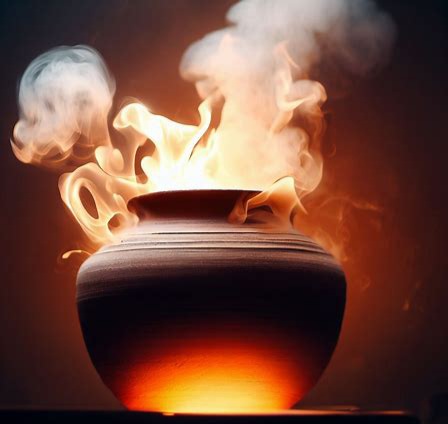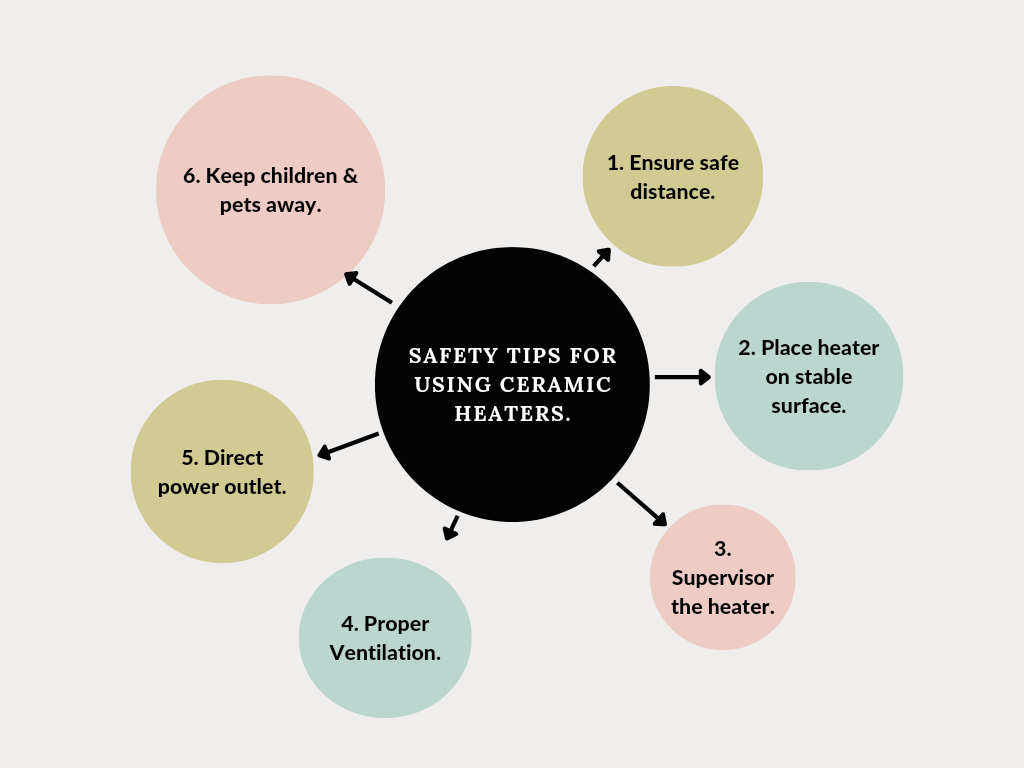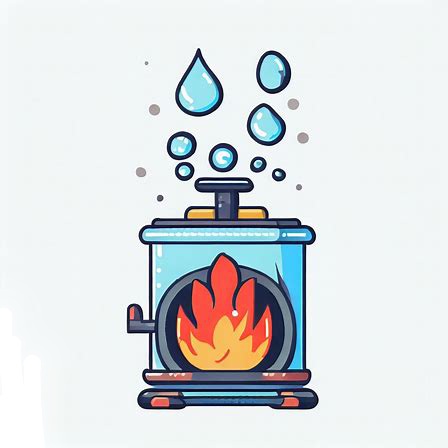Table of Contents
Ceramic heaters are popular for keeping rooms warm and cozy during cold months. But, do they burn oxygen? Let’s explore this topic in detail.
Ceramic heaters use electricity to heat up ceramic plates. Unlike oil heaters or space heaters which use combustion, they don’t burn oxygen.
Heat is transferred through conduction and radiation processes instead.
So, you can use a ceramic heater without worrying about oxygen levels in your room. However, using any type of heater may slightly decrease relative humidity. To fix this, put a bowl of water near the heater. This adds moisture back into the air.
Plus, some ceramic heaters come with safety features like automatic shut-off mechanisms. These detect drops in oxygen levels or overheating. These safety features give you peace of mind.
Who needs oxygen when you can have a ceramic heater?
Key Notes
1. Ceramic heaters do not burn oxygen as they operate on the principle of convection, which involves heating the air around the heater and circulating it in the room.
2. Unlike combustion based heaters, ceramic heaters do not produce any flames or emit harmful gases, making them a safer option for indoor use.
3. Ceramic heaters are energy efficient and provide quick and even heating, making them a popular choice for heating small to medium sized spaces.
4. It is important to ensure proper ventilation in the room when using any type of heater, including ceramic heaters, to maintain a healthy oxygen level and prevent the buildup of carbon dioxide.
5. While ceramic heaters do not burn oxygen, it is still advisable to use them in well ventilated areas and avoid using them in tightly sealed rooms to maintain a healthy indoor environment.
Understanding Oxygen Burning in Ceramic Heaters

Ceramic heaters are popular for heating rooms due to their energy efficiency and safety. But, people are questioning if ceramic heaters burn oxygen and affect the air quality. Let’s explore this topic and provide helpful information.
| Aspect | Information |
|---|---|
| Type of Heater | Ceramic Heaters |
| Fuel | Electricity |
| Heating Element | Ceramic Plates or Panels |
| Heat Produced | Warm Air |
| Risk Factors | No Carbon Monoxide or Open Flame |
| Oxygen Consumption | Minimal |
Ceramic heaters don’t actually burn oxygen. They use electricity to heat up the ceramic plates or panels inside. Then, they release warm air into the room with minimal oxygen consumption.
My friend used a ceramic heater during winter. She was worried about the oxygen levels in her small room. But, after researching and speaking with experts, she learned that ceramic heaters don’t burn oxygen or release harmful gases. So, she had a cozy and safe living environment.
In conclusion, ceramic heaters don’t burn oxygen and provide a safe, reliable and efficient way to warm small rooms. Enjoy your ceramic heater knowing it is designed with safety and comfort in mind. Stay warm without sacrificing oxygen!
Safety Tips for Using Ceramic Heaters

Ceramic heaters are a great way to add warmth and comfort to your space. However, it is important to use them safely. Here are some tips to follow:
- Ensure a safe distance: Keep flammable objects at least 3 feet away from the heater. Avoid placing items such as curtains, clothes or furniture close to it.
- Place heater on a stable surface: Make sure the ceramic heater is placed on a level and stable surface to avoid tipping over.
- Supervise the heater: When using the heater, never leave it unattended. Do not go to sleep while it’s still running.
- Proper ventilation: To maintain good air quality, open windows and use exhaust fans. Ceramic heaters don’t produce harmful gases.
- Direct power outlet: Plug the ceramic heater directly into a wall outlet. Avoid extension cords as they could cause overheating or an electrical fire.
- Keep children and pets away: To prevent any accidents, keep kids and pets away from the heater.
Additionally, check for safety features like overheating protection and tip-over shut off before purchasing. This provides an added layer of safety. Follow these tips to enjoy the warmth provided by ceramic heaters and keep your space secure. Stay cozy this winter!
Comparing Ceramic Heaters with Other Heater Types

Ceramic heaters are great for warming up a room. Let’s compare them to other heaters.
| Feature | Ceramic Heaters | Oil Heaters | Quartz Heaters | Infrared Heaters |
| Heating Method | Ceramic panels and heating element | Diathermic oil and heating element | Metal filaments and infrared radiation | Infrared radiation or quartz tubes |
| Energy Efficiency | High. Can quickly heat small rooms/spaces with focused warm air flow. | Not as high as ceramic heaters | Average | High |
Using a ceramic heater is a great way to warm up your room without burning oxygen.
Maintaining Air Quality while Using Ceramic Heaters
Ceramic heaters can be great for keeping warm during cold months. But, air quality needs to be maintained too. So, let’s look at the factors that can affect air quality when using ceramic heaters!
Heat Source? Ceramic heaters give off heat without burning oxygen. Perfect for indoors.
Ventilation? Proper airflow is key to avoiding stuffiness and keeping air fresh.
Humidity? Ceramic heaters don’t affect humidity levels.
Filtration? An air purifier with a HEPA filter can help remove dust and allergens.
Placement? Place your heater away from walls and obstructions for better heat distribution.
To maximize air quality, follow these tips:
- Clean and replace filters regularly.
- Keep humidity at 40-60%.
- Crack windows slightly when using heater for long periods.
- Avoid smoking indoors.
- Invest in an infrared ceramic heater with safety features.
- Keep away from flammable materials and place on a stable surface.
Ceramic heaters can keep you warm and keep air quality high. Stay cozy and breathe easy! Just beware of those electricity bills!
Frequently Asked Questions
1. Does a ceramic heater burn oxygen?
No, ceramic heaters do not burn oxygen. They operate by using electricity to heat ceramic plates, which then transfer heat to the surrounding air. They do not generate flames or produce carbon monoxide.
2. Do oil heaters burn oxygen?
No, oil heaters do not burn oxygen either. They work by heating diathermic oil inside the unit, which then radiates heat into the room. Like ceramic heaters, oil heaters do not produce flames or carbon monoxide.
3. Do space heaters burn oxygen?
No, most space heaters, including ceramic and oil heaters, do not burn oxygen. They function by using electricity or a fuel source (in the case of gas heaters) to generate heat. As a result, there is no combustion process that depletes oxygen levels inside a room.
4. Are electric space heaters safe in terms of oxygen levels?
Yes, electric space heaters are safe when it comes to oxygen levels. Since these heaters do not burn oxygen or emit carbon monoxide, there’s no risk of oxygen depletion or carbon monoxide poisoning. They can be used without worrying about air quality or safety concerns.
5. Can ceramic heaters produce carbon monoxide?
No, ceramic heaters do not produce carbon monoxide. The heating element in a ceramic heater is made up of metal filaments that are resistant to high temperatures. Therefore, there is no combustion process that would release carbon monoxide into the air.
6. What safety features should I look for in a space heater?
When selecting a space heater, it’s important to choose one with built-in safety features. Look for heaters that have tip-over switches, overheat protection, and cool-touch exteriors. These features help prevent accidents and ensure the safe operation of the heater.
Conclusion
Ceramic heaters are a great choice for heating up small rooms quickly! Safety features like automatic shut-off are included to keep you safe. Plus, they don’t emit flame or carbon monoxide.
But be aware – they can lower humidity levels in a room, which can cause dryness of the skin and breathing discomfort. A humidifier alongside the heater can help maintain comfy moisture levels.
Pro Tip: Make sure to allow proper ventilation in the room when using a ceramic heater. This will prevent any build-up of carbon dioxide and ensure fresh air circulation.
